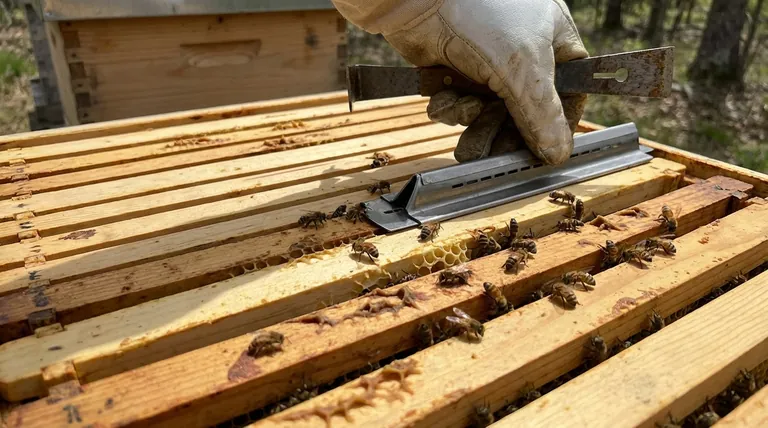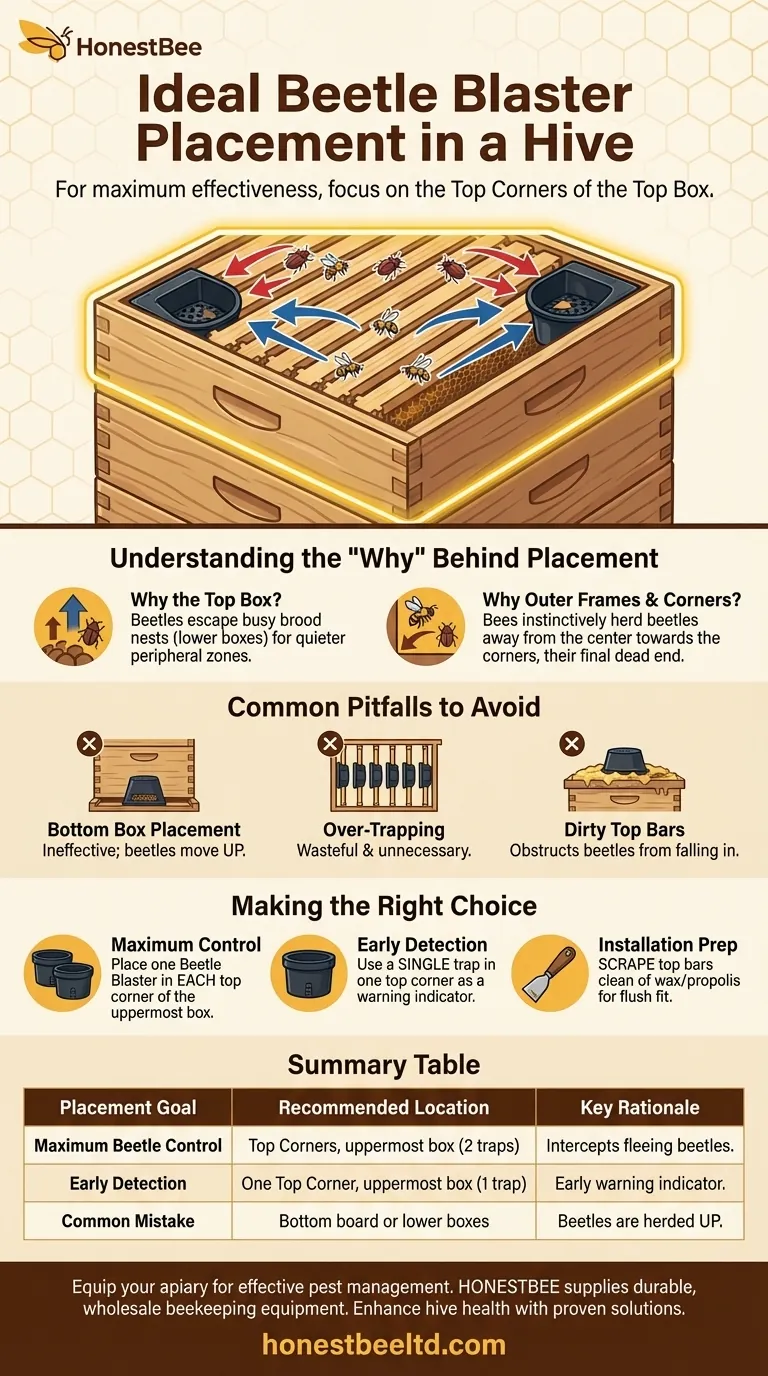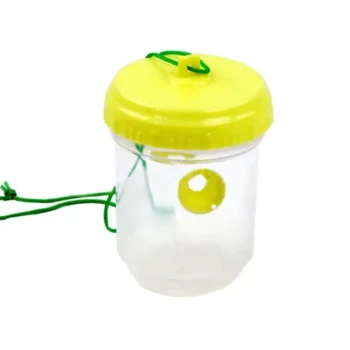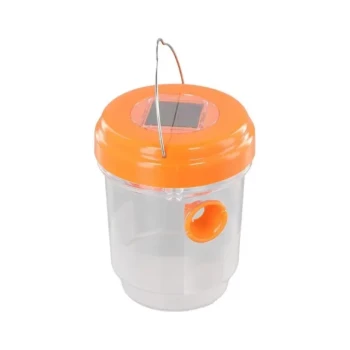For maximum effectiveness, Beetle Blasters should be placed between the two outermost frames in the top box of your hive. The key is to position them in the top corners, pushing them as close to the edge of the hive body as possible. This placement takes advantage of the natural behavior of both bees and beetles.
The core principle is not just about placing a trap, but about understanding hive dynamics. Small Hive Beetles naturally flee from bee activity, and your bees will instinctively herd these pests towards the upper, outer corners of the hive, right into your traps.

Understanding the "Why" Behind Placement
Effective pest management relies on understanding the pest's behavior. The specific placement of Beetle Blasters is a strategy designed to intercept Small Hive Beetles (SHBs) along their preferred escape routes.
Why the Top Box?
Beetles often move upwards to escape the high-traffic areas of the brood nest located in the lower boxes. The top box represents a quieter, peripheral zone where they attempt to regroup and hide from the bees' patrols. Placing traps here targets the area where they naturally congregate.
Why the Outer Frames and Corners?
The honey bee colony's defensive behavior is your greatest asset. As bees encounter SHBs, they chase them. This constant pressure forces the beetles away from the central frames, where the queen and brood are, and funnels them toward the edges of the hive.
The absolute corners of the uppermost box become the beetles' last resort—a dead end. By placing the Beetle Blasters in these corners, you are essentially setting a trap at their final destination.
Common Pitfalls and Placement Mistakes
Where you don't place your traps is just as important as where you do. Avoiding these common errors will save you time and increase the trap's effectiveness.
The Inefficiency of Bottom Box Placement
Placing traps in the bottom box or on the bottom board is significantly less effective. Beetles being chased by bees typically run away from the main cluster and often upwards, not down into the busiest part of the hive entrance. Traps placed low are easily ignored.
The Problem with Over-Trapping
It may seem logical that more traps would be better, but placing them in every box or between every frame is unnecessary. This strategy is wasteful and doesn't align with the beetles' predictable behavior. Concentrating your efforts in the top corners is a more efficient use of resources.
Ensuring a Clear Path for Beetles
Beetle Blasters are designed to sit flush on the top bars of the frames. If wax or propolis has built up on the top bars, it can create a gap or a ledge. This small obstruction can prevent beetles from falling into the trap, drastically reducing its effectiveness. Always scrape the frame tops clean before installing a trap.
Making the Right Choice for Your Goal
Use this simple guide to ensure your beetle management strategy is both efficient and effective.
- If your primary focus is maximum beetle control: Place one Beetle Blaster between the outer two frames in each of the two top corners of your uppermost hive box.
- If your primary focus is early detection and monitoring: A single trap placed in one of the top corners can serve as an excellent early warning indicator of beetle presence.
- If you are preparing for installation: Always scrape the top bars clean of any wax or propolis to ensure the trap sits flush and beetles can easily fall in.
By leveraging your bees' own defensive behavior, you can turn a simple plastic trap into a highly effective beetle management system.
Summary Table:
| Placement Goal | Recommended Trap Location | Key Rationale |
|---|---|---|
| Maximum Beetle Control | Between the two outermost frames in both top corners of the uppermost box. | Intercepts beetles fleeing bee patrols and congregating in quiet upper corners. |
| Early Detection & Monitoring | A single trap in one top corner of the uppermost box. | Serves as an effective early warning indicator of beetle presence. |
| Common Mistake to Avoid | Bottom board or lower boxes. | Beetles are herded upwards by bees, making low traps ineffective. |
Equip your apiary with the right tools for effective pest management. HONESTBEE supplies durable, wholesale-priced beekeeping equipment—including Beetle Blasters—to commercial apiaries and distributors. Enhance your hive's health and productivity with our proven solutions. Contact our wholesale team today to discuss your needs and request a quote!
Visual Guide

Related Products
- Reusable Aluminium Beetle Trap for Small Hive Beetles Silver Bullet
- Plastic Beetle Blaster Trap Beekeeping Tools and Supplies
- Reusable Clear Small Hive Beetle Traps for Beehives Beetle Trapping Tools
- Removable Washable Hive Beetle Trap Attractants for Small Hive Beetles
- Black Plastic Beetle Barn Hive Beetle Trap for Beehives
People Also Ask
- What are the chemical-free options for trapping hive beetles? Control Pests Without Chemicals
- Why are hive beetle traps important for beekeepers? Protect Your Hive from a Devastating Infestation
- What are the steps for installing hive beetle traps? A Guide to Effective Beetle Control
- What is the recommended number of beetle traps per hive? Optimize Your Hive's Beetle Defense
- How do beetle blasters work to protect bee colonies? Effective IPM for Healthy Hives



















